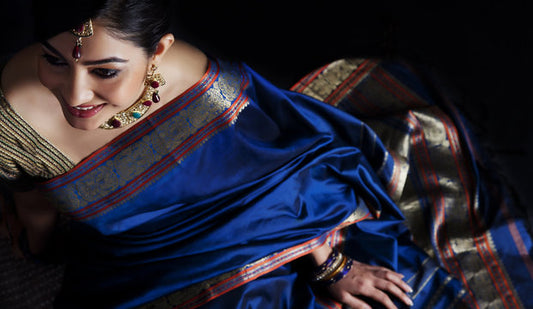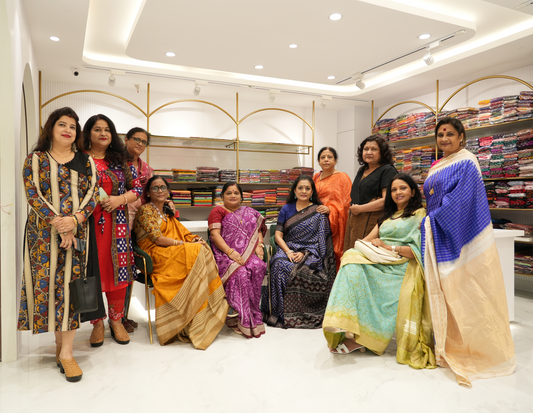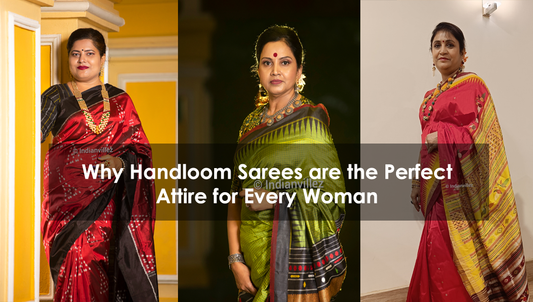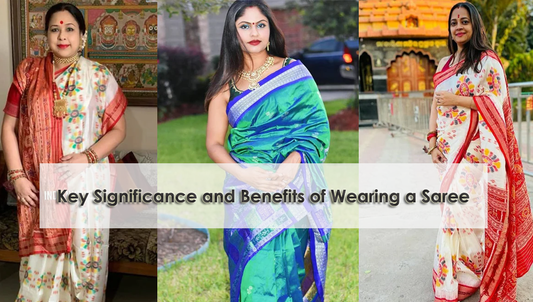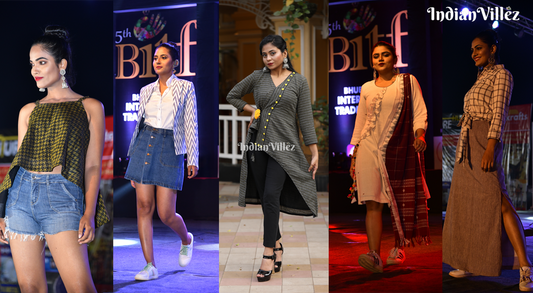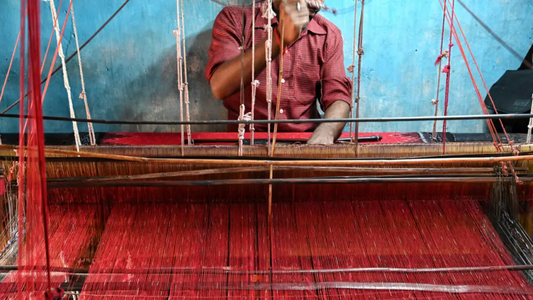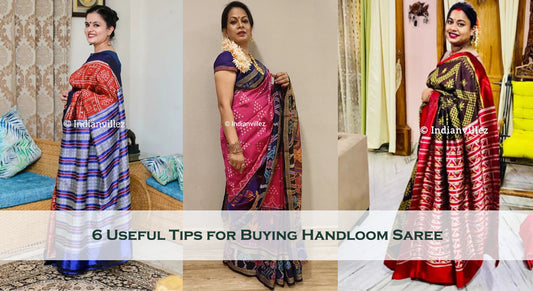The six yards of elegance become more beautiful with handmade fabrics and traditional patterns. Sambalpuri Sarees belonging to the state of Odisha is a beautiful tie-dye art reflected in the intricate weaves which take away your heart.. These threads are first tie-dyed and then later woven into a fabric.
The Hub of Samabalpuri Handloom
Sambalpuri Saree is from the town of Goddess Samalei i.e.Sambalpur. The famous Bandha prints of Odisha are of the Sambalpuri Silk Ikat Sarees. Sambalpuri Silk Sarees are widely loved in the state for extraordinary woven pallus and borders of contrasting colors and meaningful designs from Odisha temples. The Sambalpuri narrates stories of nature and society through its fabric.
The Unique Technique of Odisha Handloom
Sambalpuri uses the double ikat weaving which is one of the hyped handlooms in the weaving world. The Sambalpuri Silk Sarees were started off by the Bhulia community but only came to be known to the world when Late Mrs. Indira Gandhi wore it. The silk sarees are one of prominent collections in Odia households. It is considered to be a precious possession amongst all the Odisha handlooms. Along with the bright colors and gorgeous textiles this pure sambalpuri saree becomes one of a kind.

The Sambalpuri Sarees are produced in the Bargarh, Sonepur, Sambalpur, Balangir district and Boudh District of Odisha and are 100% hand-woven fabric. Sambalpuri Saree comes in many types like Ikat, Pasapalli, Sonepuri, Bomkai, Bapta and Barpali.
Here are a few lesser-known facts about the beautiful yard of elegance.- Sambalpuri Sarees have extraordinarily gorgeous woven pallus and borders which are 100% handwoven.
- The Sambalpuri Sari is said to be woven by the Bhulia community from the Western Odisha.
- The artisans who weave these Sambalpuri Sarees (Bhulia) are believed to have fled Northern India after the fall of the ChouhanEmpire at the hands of the Mughals in the year 1192 AD.
- Sambalpuri Sarees were initially known as “Bhulia Kapta” because of the group of weavers.
- The Sambalpuri Saree got popularized in the mid 1980s when late prime minister Mrs Indira Gandhi wore it.
- Sambalpuri sarees reflect an original style of craft known as Baandha which is popularly known as “Bandhakala” craftsmanship.
- It is said that the Bandhkala is descended from the Bandhini dyes of Gujarat and Rajasthan.
- Radhashyam Meher, Kunja Bihari Meher, Chaturbhuja Meher and Krutartha Acharya are some of the leading exponents of Sambalpuri ikat who took the sambalpuri handloom to the world stage.
- Sambalpuri Sarees are known for their breathability. They keep you cool in summers and warm in winters.
- All types of Sambalpuri Sarees are commonly known as “Pata” and got their Geographical Indication (GI) tag in 2010.
Sambalpuri Sarees have striking fabrics which are colorful, minutely detailed and extraordinary. The Sambalpuri is a brilliant handloom that appeals on account of its splendid depictions of nature, flora and fauna, sankha (conch), and many other elements on fabrics. Sambalpuri cotton sarees find a preference for daily wear as well as for casual occasions and generally housewives and few wear it as college and office outfits. These sarees are usually very much preferred for grand and exclusive occasions such as religious functions, festivals and weddings.


